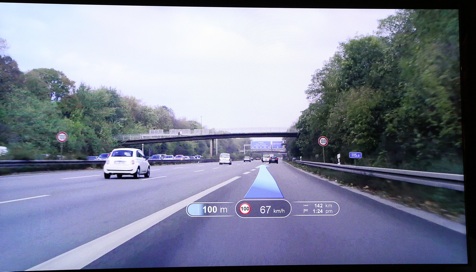The only time I’ve crashed my car was down to being distracted by the infotainment system; I took my eyes off the road in what I thought was a safe, quiet area to select a new album from my MP3 player, which was plugged in and displayed its tracks on a LCD display on the dashboard. Fortunately, I wasn’t hurt and no-one else was involved, although there’s a bollard near my parents’ house with some blue paint on it and I was chastened by the bill for replacing an entire front panel and left headlight. I know my limitations, and I leave my MP3 player on shuffle while driving these days.
I can console myself with the thought that it’s easily done. Even Michael Schumacher’s fallen foul of lapses of attention while driving off-duty. But the problem’s getting worse – and it seems that it’s mostly down to drivers’ demands.
Manufacturers of in-car infotainment systems say that they’re responding to the perception that people want to be able to access all the functionality they’ve got used to on their mobile phones all the time. They want to make calls, they want to select music to listen to, they want to be able to access traffic and weather updates, they want to be able to check Twitter and Facebook. Moreover, they don’t just want to do it, they actually do it: we’ve all seen people with mobile phones clamped to their ears, attempting to drive one-handed, and horror stories about accidents caused by texting-while-driving are becoming increasingly common. And of course anecdote isn’t evidence, but I’m hearing more and more about people driving with a smartphone on their knee and glancing down to check their screen at regular intervals.

Which is, of course, horribly dangerous. Studies by the UK Transport Research Laboratory in 2002 found that talking on a mobile, even hands-free, makes you react more slowly than if you were over the drink-drive limit. The US has the appalling statistic of over 3,300 people killed by distracted drivers in 2011.
‘Being able to check information at any time is a potent liberty. But taking your attention away from driving is stupid
So it’s hardly surprising that infotainment companies are trying to devise ways for drivers to access the functionality they crave without taking their attention away from driving. As we detail in our upcoming digital issue, there are many techniques and approaches to the problem, from touch-screens to head-up displays and gesture control of in-car electronics.
But isn’t there an element of pandering to stupidity in here? It’s notoriously hard to change human behaviour and people resent being told what to do, especially when it infringes a liberty they’ve become used to — and being able to check information at any time is a potent liberty. But taking your attention away from driving is stupid, there’s really no two ways about it. There can be careful control of what kind of information is displayed at what time, but even the temptation of being able to access functions which you don’t think will distract you — but will — might be too much for many over-confident drivers.
Is there a solution? There may be. We’re also reporting in this issue about the development of autonomous cars. This is a controversial subject — the other thing that people don’t like doing is relinquishing control — but it might be the answer to the problem of distraction. You want to check Twitter? You want to talk on the phone? Fine. You do that. Let the car drive. It doesn’t have a mind to be distracted, and you — and everybody else on the road — stand a better chance of still being able to breathe once you’ve put the smartphone down.










Water Sector Talent Exodus Could Cripple The Sector
Maybe if things are essential for the running of a country and we want to pay a fair price we should be running these utilities on a not for profit...